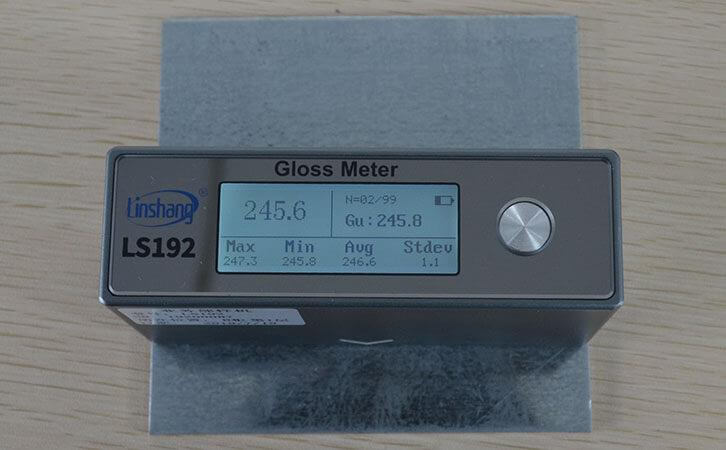Influencing Factors and Measurement Methods of Steel Plate Gloss
1. What is the gloss of the steel plate? What are the influencing factors?
Steel plate gloss is a set of physical quantities that evaluate the ability of the steel plate to reflect light under geometrically prescribed conditions. With direction-selective reflective properties, we usually refer to gloss as "mirror gloss." In simple terms, the gloss of steel plate refers to the reflective ability of its surface.
Metals are metal crystals combined by metal bonds. Metal atoms are arranged in the most densely packed state. There are free electrons inside the metal. Its range of motion is the entire metal. When white light hits the metal surface, free electrons can absorb all light with a wavelength is then reflected again, so most metals (except gold is yellow, copper is red, cesium is light yellow, bismuth is light red, and lead is light blue) have a silvery white luster.
The gloss of different steel plates is mainly related to the characteristics of the reflected light on the surface. For example, if the metal surface is kept shiny, other oxides may be formed without metallic luster; Diffuse reflection is formed with less metallic luster.
2. How to increase the gloss of the steel plate?
Generally speaking, the smaller the surface roughness of the steel sheet, the higher the surface glossiness and vice versa. Therefore, the gloss of the steel plate can be improved by polishing.
Polishing refers to a machining method that reduces the surface roughness of an object by mechanical, chemical or electrochemical methods to obtain a bright and flat surface. Polishing cannot improve the dimensional accuracy or geometric accuracy of the workpiece, but is used for the purpose of obtaining a smooth surface or specular gloss.
In addition, steel plate coating is also a commonly used method to improve gloss. By coating a thin layer on some metal surfaces, it can have a good protection effect, prevent metal oxidation (such as rust), improve wear resistance, conductivity, light reflectance, corrosion resistance (copper sulfate, etc.) and improve Aesthetic effect.
3. Evaluation method of steel plate gloss
Gloss is a relatively common reference indicator in industry. For example, metal processing, ceramic products, paints and coatings, textile dyeing, etc. will have gloss requirements. In the actual production process, in order to accurately evaluate the gloss of the steel sheet and ensure the appearance quality of the product, it can be measured by a surface gloss meter. The surface gloss meter is a special instrument for measuring the surface gloss of objects. At present, the domestic surface gloss meter meets the requirements of the JJG working surface gloss meter before it can be used normally. LS192 surface gloss meter, a 60-degree angle light source is projected. Place the instrument on the steel plate surface during measurement. According to the conditions of the light source and the receiver, the light flux of the steel plate in the specular reflection direction and the reflection of the glass standard in the specular reflection direction. The ratio of light to luminous flux is converted into data by electronic calculation and displayed on the LCD screen of the instrument. The display interface of the LS192 surface gloss meter has a statistical function, which can display the maximum, minimum, average and standard deviation of the test. This feature can be used to analyze the uniformity of the surface gloss of the steel plate.
